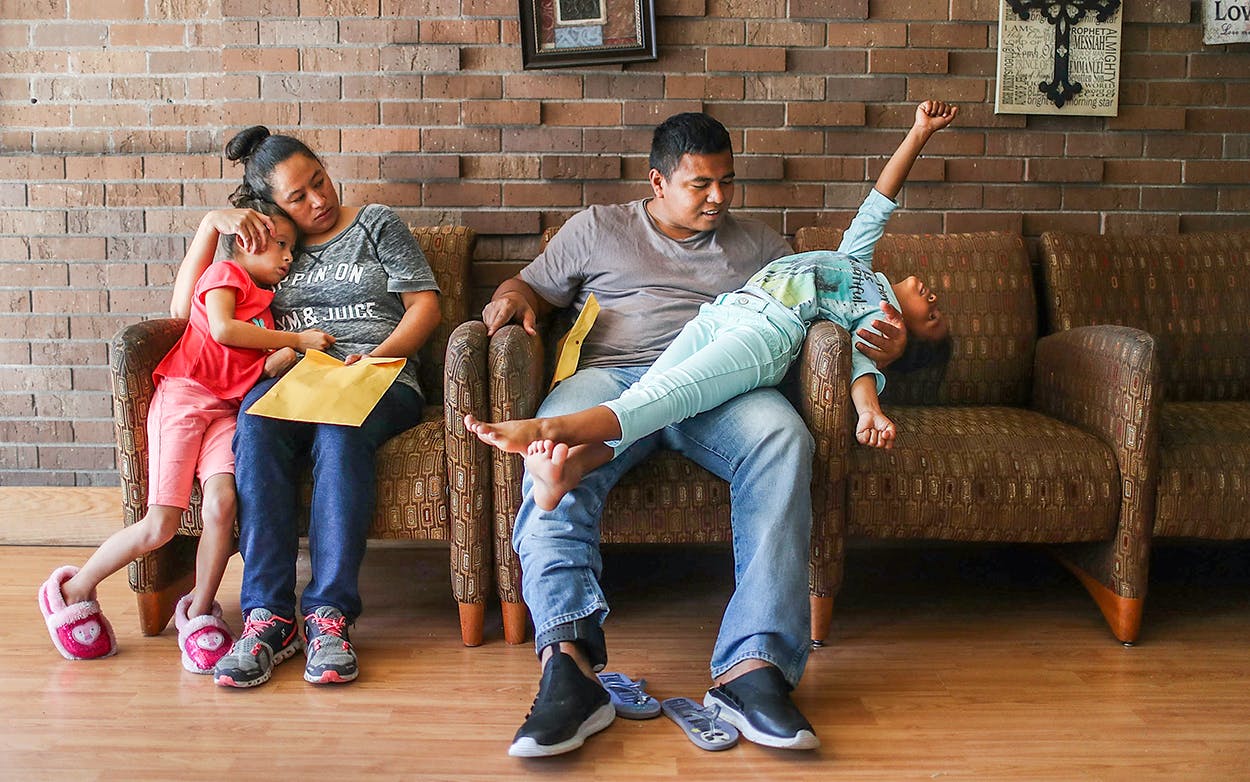A month after a court-ordered deadline for reuniting families separated by U.S. agents at the Mexican border, more than 500 children remain in government custody and some 60 parents remain in immigration detention facilities with little explanation about the status of their children. Last Friday, five fathers and a mother were released in El Paso and reunited with their sons after months of separation, and weeks after more than 2,000 of their fellow detainees had their children returned. Their frustration was evident as they spoke to the media on Saturday. Recalling a promised July reunion with her son that was aborted without explanation, the mother said: “I even confronted an officer once. I told her, ‘All these tears I’m shedding, you will pay for them.’ They would only laugh. … But God exists and one day, soon, all the tears we shed, they will fall on you.”
The Trump administration said it met the July 26 reunification deadline set by U.S. District Judge Judge Dana Sabraw of San Diego because it had reunited all parents and children it deemed “eligible.” But in a court filing last week, the administration said 528 separated children still remained in the custody of the Office of Refugee Resettlement, the agency in charge of the children taken from their parents. Much of the focus of Sabraw and the media has been on the 343 children whose parents were deported without them; less attention has been paid to the dozens of children the government says it still holds in custody because their parents remain in immigration detention for vague “red flag” reasons. The government put that number at 62 as of Monday, which likely included the six parents released in El Paso at the end of the week.
The six parents released on Friday each had one son who was taken from them. After reunification at an Immigration and Customs Enforcement detention center in El Paso, they were sent to the Annunciation House migrant shelter for a brief stay before joining family elsewhere in the United States while their asylum cases are heard in immigration court. They were among about 40 parents detained in the El Paso area after the reunification deadline whose children were still in Office of Refugee Resettlement custody, said Taylor Levy, legal coordinator for El Paso’s Annunciation House. “There’s never been any good explanation given for why they were not reunified. It was simply, it did not happen,” she said.
Five of the six newly reunited parents—four fathers and one mother—spoke at a news conference on Saturday. The fathers covered their faces out of fear of retaliation by the U.S. government or people in their home countries; the mother asked not to be photographed at all. All asked not to be identified. They told stories of separation that have now become familiar: Border Patrol agents taking their children, often telling the parents that they would never see their kids again, and causing the parents to spend months in anguish and uncertainty. The men wept as they told their stories. Several of the parents told stories similar to those detailed in an August 10 Texas Monthly story about aborted reunions at the July 26 deadline. They were told that they’d be reunited with their children; they changed into civilian clothes and were taken to a different facility to get their children; then they were told that they would not be reunited with their children and they were returned to detention.
Levy and Ruben Garcia, the founder and director of Annunciation House, said they and other advocates will continue to press for the reunification of all separated families. But Garcia said a lack of transparency in the U.S. immigration enforcement system makes it difficult to track the status of many of these families. “This is incredibly disconcerting and disturbing,” Garcia said. “Because when the decision is made to have a policy to detain and deprive human beings of their freedom, there is an absolute need for that detention—the conditions under which that person is being detained—to be utterly and completely transparent. And that is simply not the case when it comes to immigration and the system as it presently exists.”
Spanish translation assistance for this article was provided by Lourdes Cueva Chacón, a doctoral student in the School of Journalism at the University of Texas at Austin.
- More About:
- Illegal Immigration
- Family Separation
- Donald Trump
- El Paso






